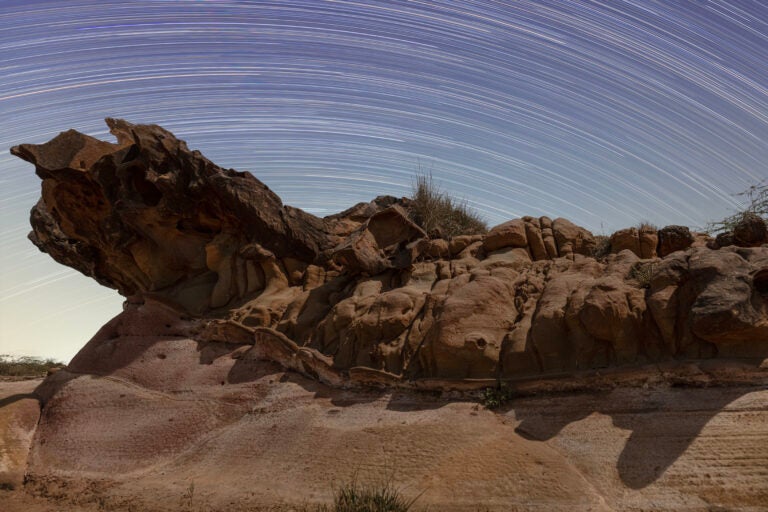The Milky Way is a treasure-trove of celestial objects. Brighter portions of its starlit band provide the backdrop for viewing dark clouds of dust and gas, such as Barnard 86. Pegged as the Ink Spot Nebula for its pitch-black appearance against numerous stars, Barnard 86 spans 5′ and can be spotted 2.5° north-northwest of the 3rd-magnitude star Gamma (γ) Sagittarii. You’ll find it nestled between NGC 6520, a tidy 7th-magnitude open cluster on its eastern border, and an orange double star shining at magnitude 6.7 to the west. The trio provides notable contrast so that even a 4-inch telescope will deliver a nice view when you observe it under dark rural skies.
I use a dimmable red light while sketching to preserve my night vision. For the Ink Spot Nebula, I added the brightest stars in the field of view first with moderate lighting so that I could easily cross-reference them for accurate magnitudes and positions. Once those initial stars were in place, I dimmed my light just enough to sketch by.
Next, I added the soft glow of NGC 6520. You can create nebulous star glow directly on the paper with a pencil — when held at a shallow angle with light pressure — and then smooth it with a blending stump. There is a risk of leaving harsh pencil lines with that method, so I opted to render the star glow directly with a blending stump that I rubbed through a scrap patch of graphite outside the sketch area. I added the remainder of the cluster’s stars with an HB pencil before tackling Barnard 86.
To me, the dark nebula resembles the body of a stingray. Its faint tail trails behind it just below NGC 6520. Since the object is so opaque, I left that area of the sketch blank. Instead, I filled in the haze surrounding it with a folded chamois that I rubbed through the patch of graphite. I rendered any areas that required finer detail with a graphite-laden blending stump as well as a kneaded eraser, which worked particularly well to define the edges of the dark nebula and to form the nuances I observed within the haziness.
Image 4: I observed and sketched Barnard 86 and NGC 6520 while using a 4-inch f/9.8 refractor on a German equatorial mount with an 8mm Plossi eyepiece for a magnification of 125x. I later scanned and inverted the sketch with Photoshop to better represent the eyepiece view. The image is orientated so that north is to the top, west is to the right.
I completed the sketch by methodically scanning the view to include the remaining stars and to touch up any that I had softened when using the chamois and blending stump. I made final adjustments to their magnitudes, then added star glow around the brightest with a blending stump. To better represent the eyepiece view, I scanned the sketch and then inverted it with Photoshop.














